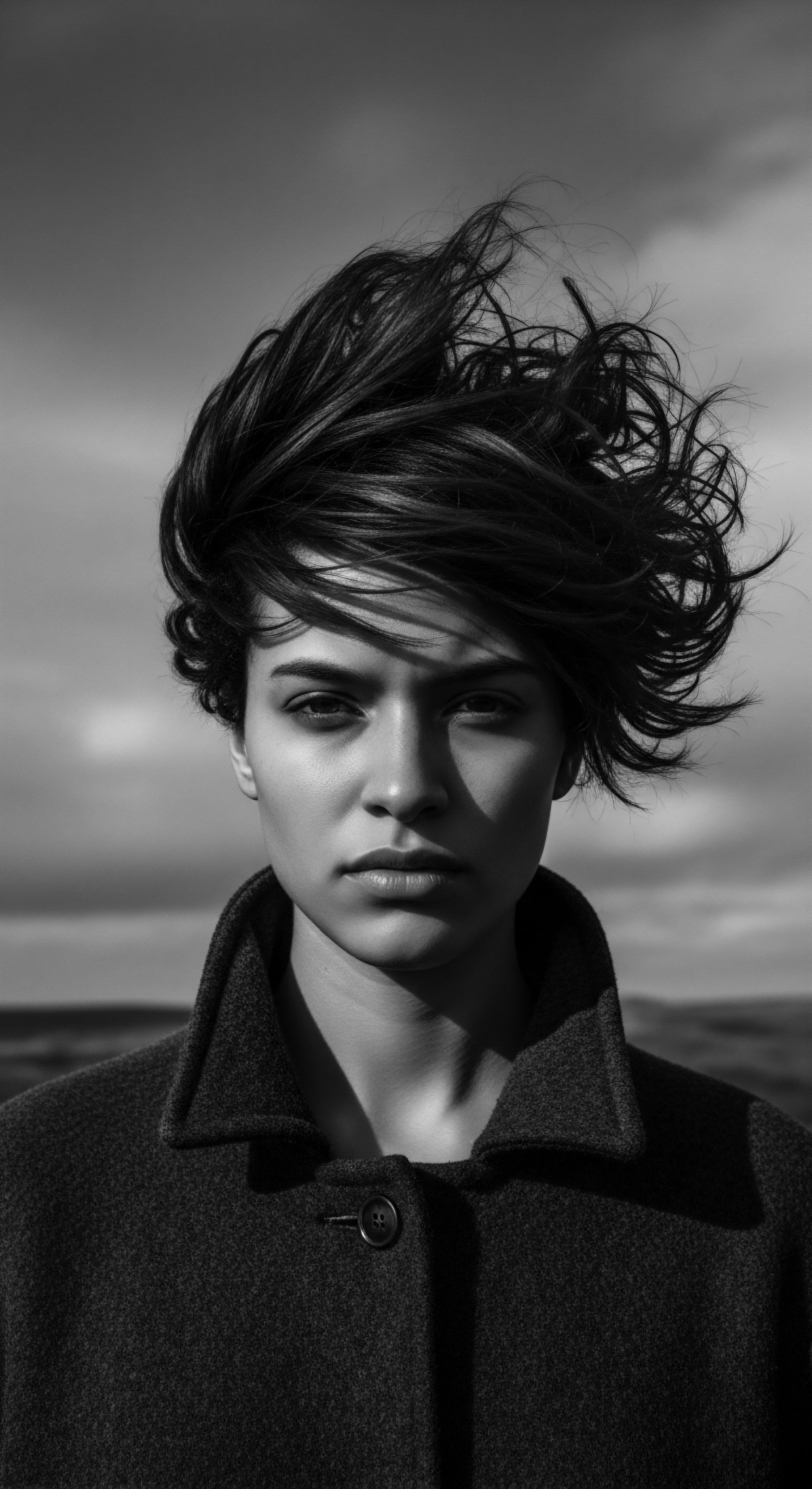
Fundamentals
Afro-Textured Hair Wellness represents a holistic perception of care and appreciation for hair with coily, kinky, and curly patterns, primarily associated with individuals of African descent and those with mixed heritage. Its elementary meaning reaches beyond mere superficial beauty practices, encompassing the physical vitality of the hair strand, the emotional resonance of self-acceptance, and the profound cultural connections woven through generations. This concept acknowledges the unique biological attributes of textured hair while recognizing its deep historical and social meaning. The designation of Afro-Textured Hair Wellness speaks to a state of being where one’s hair is not only physically healthy but also cherished as an extension of identity and a testament to ancestral legacies.
The core of this wellness paradigm begins with understanding the distinct structural characteristics of Afro-textured hair. Each strand forms a helical spiral, which contributes to its incredible volume and versatility. This inherent coiling, while granting magnificent form, also presents particular needs regarding moisture retention and mechanical fragility.
Consequently, traditional and contemporary care regimens prioritize gentle handling, deep hydration, and protective styling. The explication of Afro-Textured Hair Wellness, at its simplest, guides individuals toward practices that honor these unique qualities, fostering an environment where hair can thrive in its natural state.
Afro-Textured Hair Wellness extends beyond mere physical health, embodying the deep cultural, emotional, and ancestral ties inherent in coily, kinky, and curly hair.
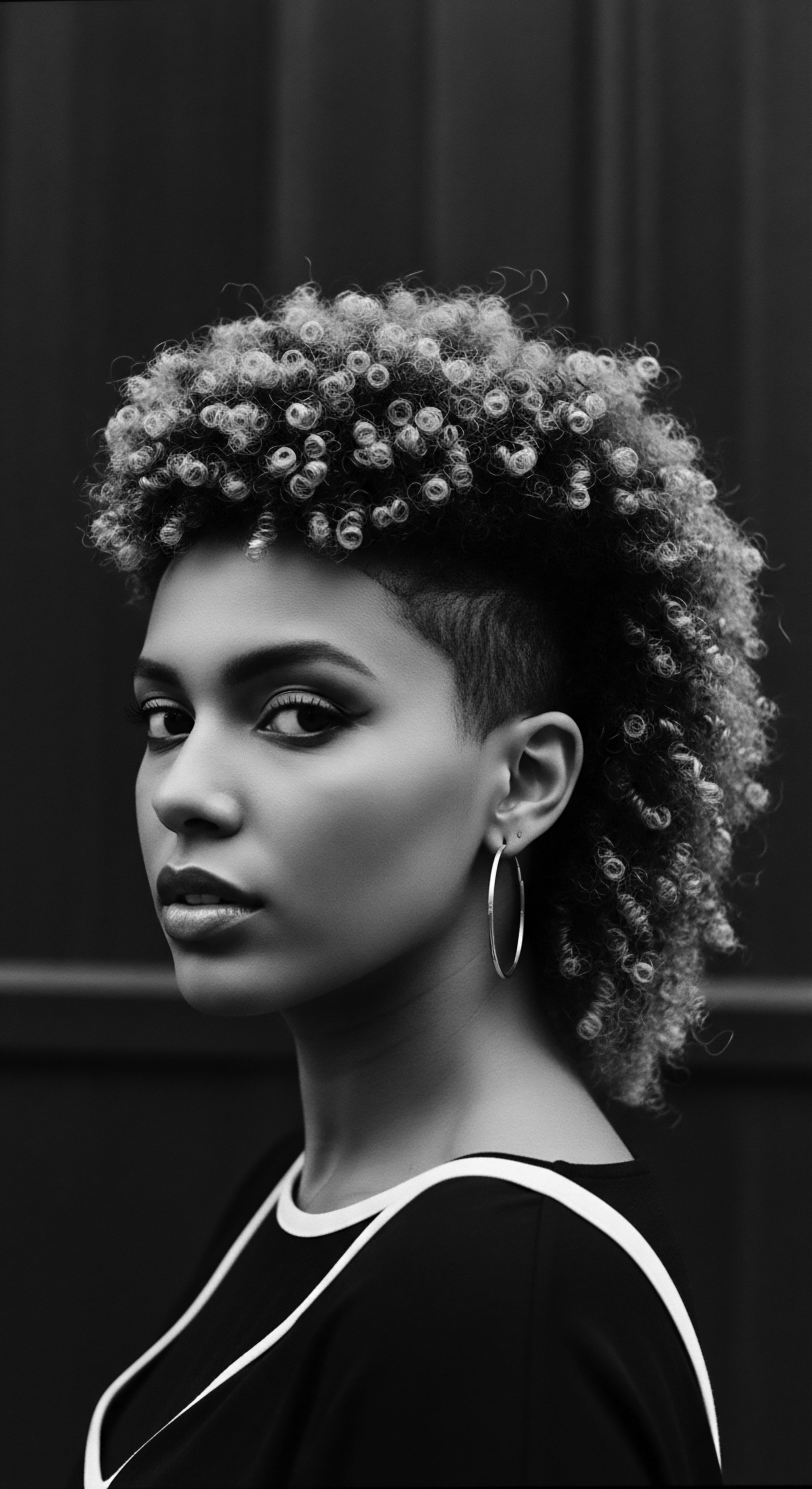
Foundational Elements of Care
For those new to the discourse surrounding Afro-Textured Hair Wellness, the journey often begins with recognizing basic principles that distinguish it from care routines for other hair types. This distinction is not about superiority, but rather about tailored attention that respects the hair’s inherent structure. The elemental approach involves a cycle of cleansing, conditioning, and protecting.
- Gentle Cleansing ❉ The coily nature of Afro-textured hair means natural oils from the scalp, known as sebum, travel slowly down the hair shaft. Harsh cleansers can strip these vital oils, leading to dryness and brittleness. Low-lather shampoos or co-washes are often preferred to preserve moisture.
- Deep Conditioning ❉ Regular, intensive conditioning treatments are fundamental. These treatments replenish moisture, enhance elasticity, and provide a protective layer, mitigating environmental stressors. Ingredients like shea butter, coconut oil, and various botanical extracts, many with ancestral ties, are commonly utilized.
- Protective Styling ❉ Styles that tuck away hair ends, such as braids, twists, and cornrows, minimize manipulation and exposure to external elements. These practices reduce breakage and promote length retention, a common aspiration within textured hair communities.
The historical roots of these practices are not coincidental; they are echoes of ancestral wisdom. Ancient African civilizations, for instance, understood the delicate nature of their hair and developed elaborate care rituals using local resources. These early forms of hair wellness were not just about appearance; they were communal activities, often spanning hours or days, fostering social bonds and transmitting cultural knowledge.
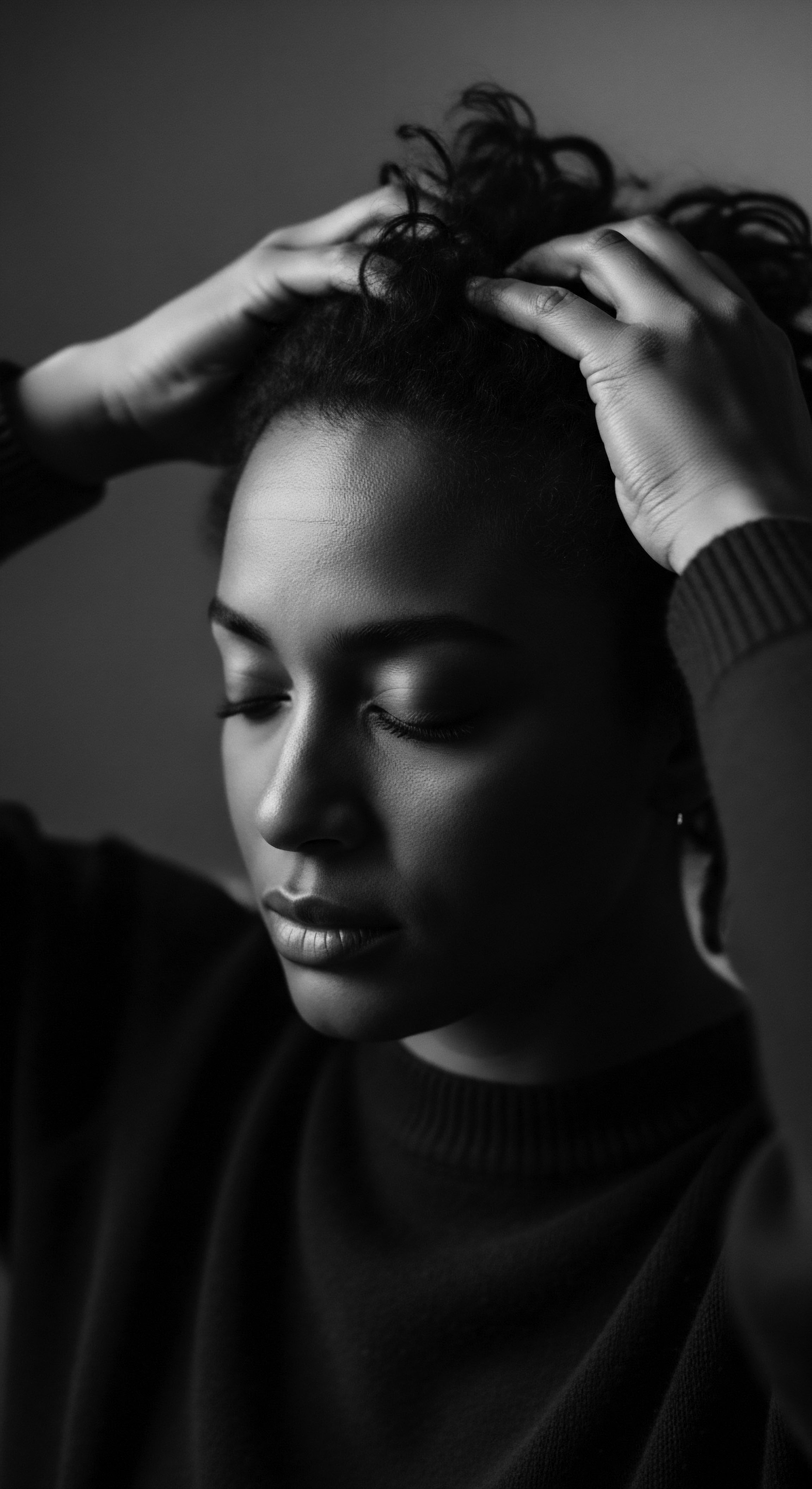
Intermediate
Moving beyond the elementary perception, Afro-Textured Hair Wellness reveals itself as a complex interplay of historical resilience, cultural affirmation, and scientific understanding. The significance of this wellness concept is not solely in its practical application but in its capacity to restore and affirm a heritage that has often been marginalized. This interpretation delves into the layered meanings hair holds within Black and mixed-race communities, acknowledging that wellness is deeply intertwined with identity and social context.
The description of Afro-Textured Hair Wellness at this stage incorporates a deeper appreciation for the communal aspects of hair care. Historically, hair grooming was a significant social ritual, a time for sharing stories, wisdom, and strengthening familial bonds. This communal practice, disrupted by the transatlantic slave trade, has seen a resurgence in contemporary natural hair movements, where shared experiences and collective learning reinforce a sense of belonging and cultural pride. The delineation of Afro-Textured Hair Wellness therefore extends to these shared spaces and the knowledge exchange they facilitate.
The journey of Afro-Textured Hair Wellness is a narrative of reclamation, where ancestral wisdom meets modern understanding to celebrate identity and resilience.
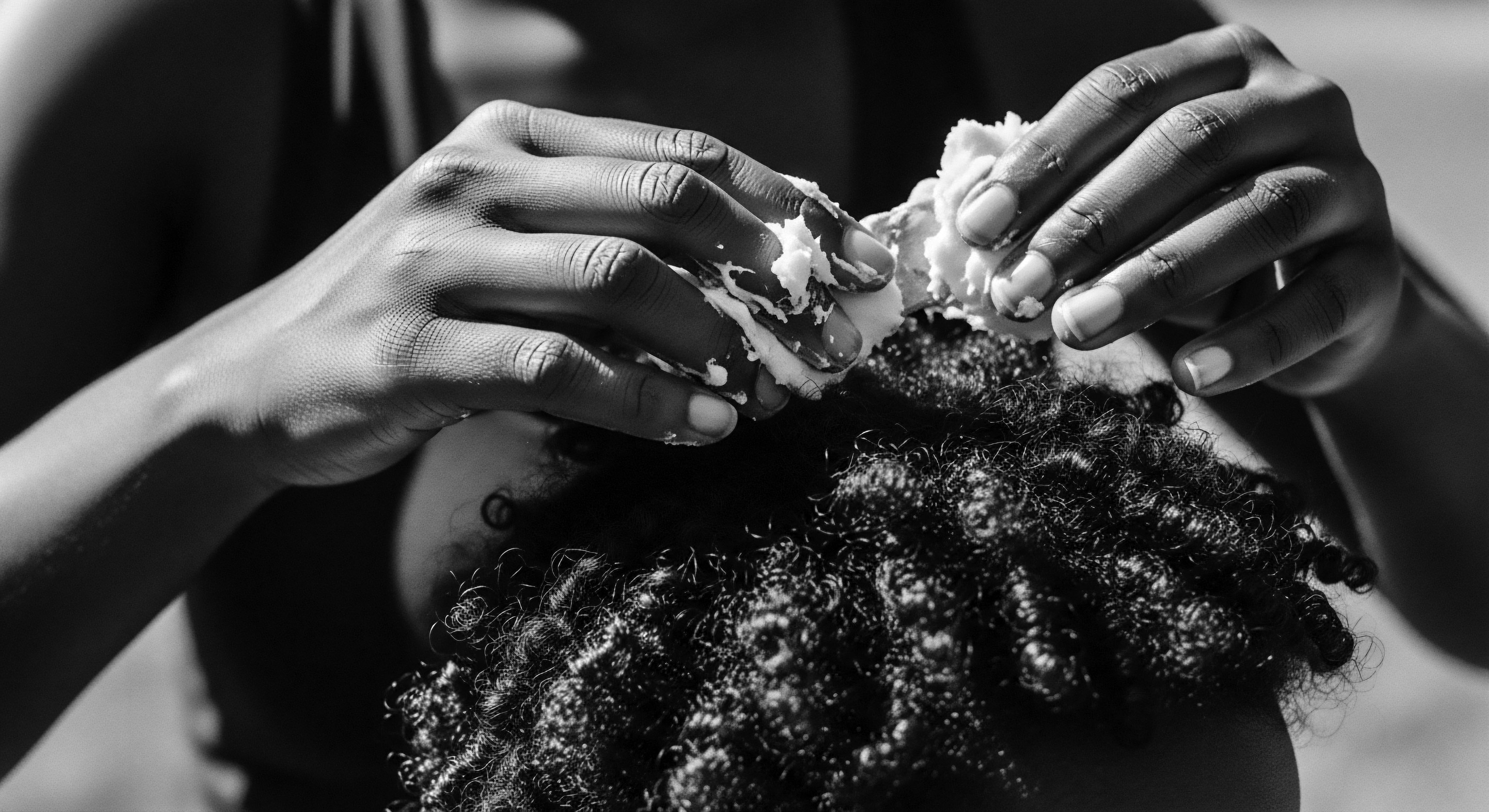
The Tender Thread ❉ Ancestral Practices and Their Echoes
The history of Afro-textured hair care is a profound narrative of adaptation and ingenuity. During the transatlantic slave trade, enslaved Africans were often stripped of their cultural identity, including their hair practices, through forced head shaving. Despite these brutal attempts at erasure, knowledge of hair care persisted, often through covert means.
Women, in particular, found ingenious ways to maintain their hair heritage, utilizing whatever resources were available. This period underscores the deep resilience embedded within the Afro-Textured Hair Wellness journey.
Consider the ingenious use of cornrows during the era of enslavement. These intricate patterns, far from being mere decorative styles, sometimes served as coded maps for escape routes, with seeds or gold hidden within the braids for survival. This specific historical example powerfully illuminates the Afro-Textured Hair Wellness’s connection to textured hair heritage and ancestral practices. It demonstrates how hair, a seemingly personal attribute, became a tool of resistance and a vessel for collective memory.
The deliberate concealment of sustenance and directional information within hair styles speaks volumes about the depth of ingenuity and the will to preserve life and cultural knowledge against immense oppression. This practice transformed hair from a vulnerable target of dehumanization into a silent, potent symbol of defiance and strategic communication.
| Historical Context Pre-Colonial African Societies |
| Traditional Practice (Pre-Colonial/Slavery Era) Hair as Social Identifier ❉ Hairstyles conveyed marital status, age, tribe, wealth, and spiritual beliefs. |
| Modern Parallel/Scientific Link Identity Affirmation ❉ Natural hair movements today assert identity and cultural pride, rejecting Eurocentric beauty norms. |
| Historical Context Enslavement Period |
| Traditional Practice (Pre-Colonial/Slavery Era) Cornrows as Maps/Storage ❉ Braids hid seeds or provided escape routes. |
| Modern Parallel/Scientific Link Protective Styling ❉ Modern braids and twists shield hair from damage, echoing ancestral methods of preservation. |
| Historical Context Ancient African Hair Care |
| Traditional Practice (Pre-Colonial/Slavery Era) Natural Ingredients ❉ Use of shea butter, plant extracts, and clays for moisture and protection. |
| Modern Parallel/Scientific Link Botanical Formulations ❉ Contemporary products often feature these traditional ingredients, validated for their conditioning properties. |
| Historical Context Communal Grooming |
| Traditional Practice (Pre-Colonial/Slavery Era) Social Ritual ❉ Hair styling as a bonding activity among women. |
| Modern Parallel/Scientific Link Community Building ❉ Natural hair meetups and online platforms serve as spaces for shared knowledge and support. |
| Historical Context These comparisons illustrate the enduring wisdom of ancestral practices and their continuous relevance in shaping Afro-Textured Hair Wellness today. |
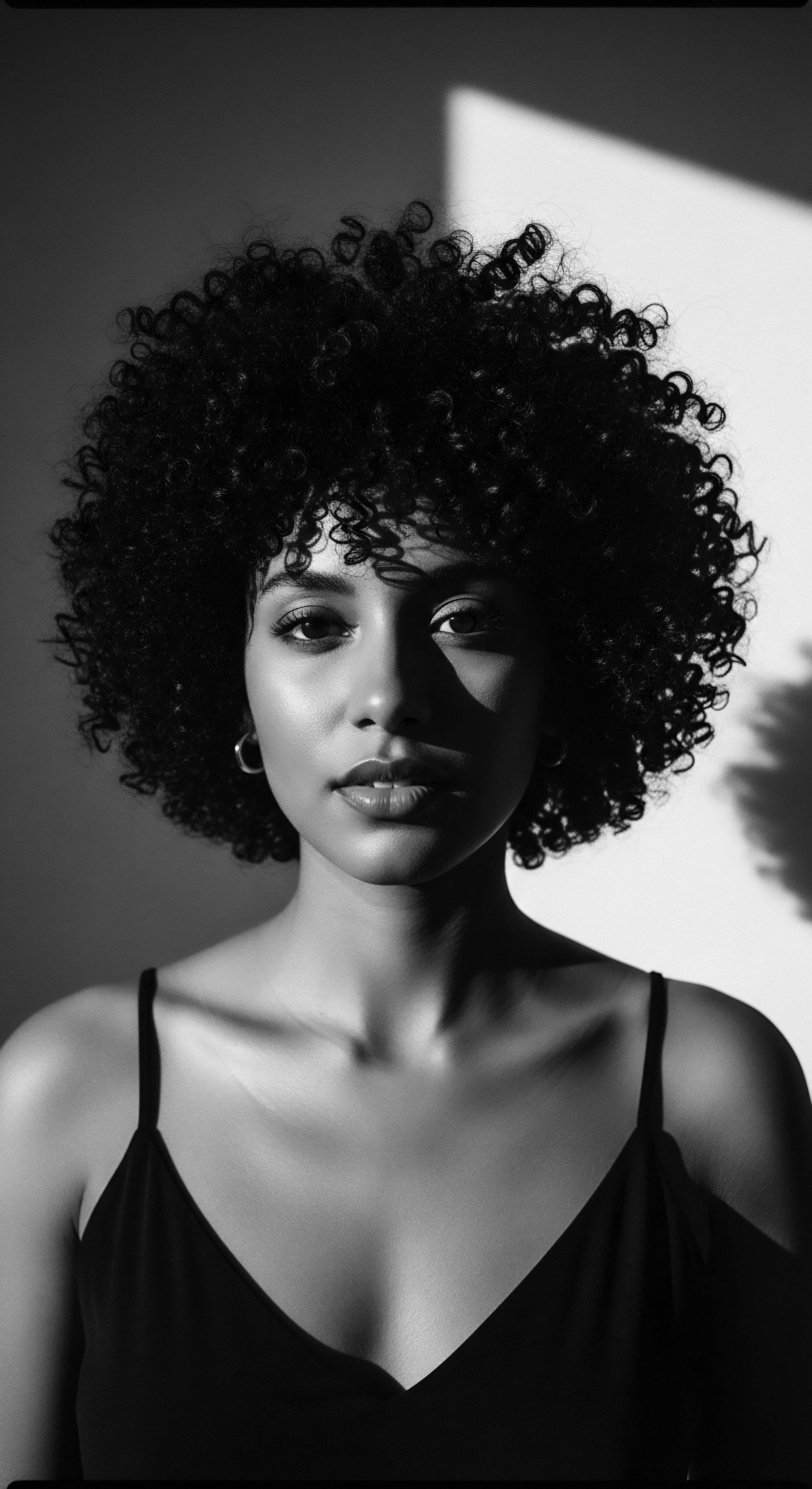
Cultural Significance and Identity
The definition of Afro-Textured Hair Wellness must also encompass its role in voicing identity. For individuals of African descent, hair has historically been a powerful symbol of self-expression, pride, and resistance. The act of caring for and styling Afro-textured hair can be a deeply personal and political statement, particularly in societies where Eurocentric beauty standards have long dominated. The political resonance of hair is evident in movements such as the Black Power era, where the Afro became a prominent symbol of racial pride and a rejection of imposed norms.
The perception of “good” versus “bad” hair, often tied to proximity to European hair textures, emerged during slavery and persisted through generations, causing psychological distress and impacting self-esteem. The re-embracing of natural textures in the 21st century represents a collective re-alignment with African heritage, fostering a sense of agency and challenging oppressive beauty ideals. This contemporary movement, therefore, is a powerful manifestation of Afro-Textured Hair Wellness, signifying a return to self-acceptance and ancestral roots.
The various designations and meanings of Afro-textured hairstyles across different African cultures further highlight the profound cultural heritage.
- Yoruba (Nigeria) ❉ Elaborate hairstyles indicated community roles, femininity, marriage, and coming-of-age rites. Hair was considered sacred, a medium for spiritual energy connecting individuals to ancestors.
- Himba (Namibia) ❉ Dreadlocked styles coated with red ochre paste symbolized connection to the earth and ancestors, with styles indicating age, life stage, and marital status.
- Fulani (Sahel/West Africa) ❉ Women often plaited hair into five long braids, adorned with beads and cowrie shells, sometimes attaching family silver coins as a heritage symbol.
- Zulu (South Africa) ❉ Intricate braids for men symbolized strength and honor, with each braid signifying a significant life event or courageous feat.
These examples illustrate that Afro-Textured Hair Wellness is not a monolithic concept but a rich, diverse collection of practices and meanings, each rooted in distinct cultural legacies. The elucidation of this wellness model necessitates an appreciation for this expansive heritage.
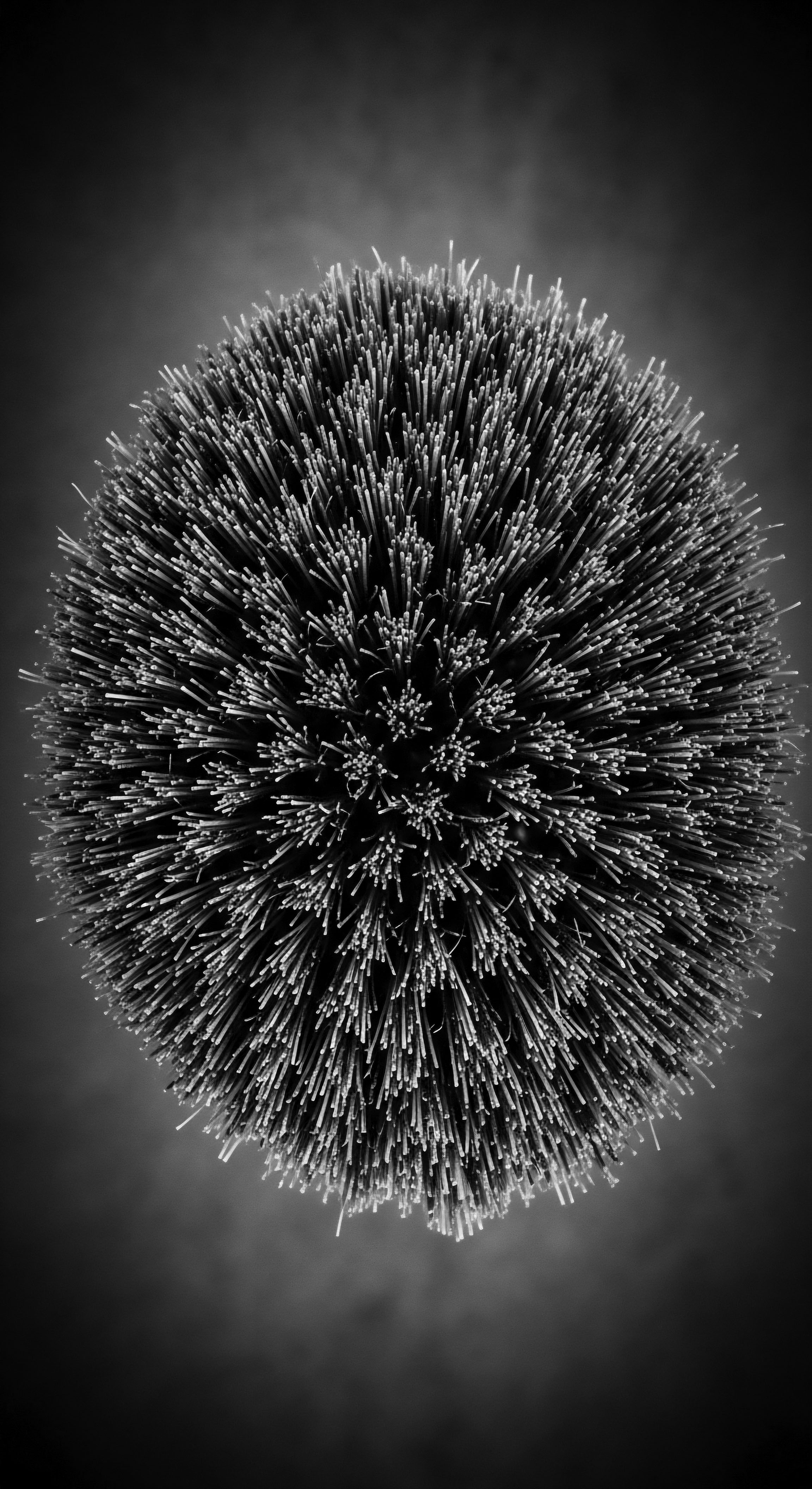
Academic
Afro-Textured Hair Wellness, within an academic context, represents a transdisciplinary domain of inquiry, systematically examining the complex interplay of biological trichology, cultural anthropology, social psychology, and historical studies as they pertain to hair with coily, kinky, and curly structures, particularly among populations of African descent. This academic definition posits Afro-Textured Hair Wellness not merely as a state of optimal physical health for a specific hair type, but as a dynamic, historically contingent, and socio-politically charged construct. It encompasses the physiological integrity of the hair fiber, the psychosocial well-being of the individual, and the collective cultural preservation efforts that define and redefine Black and mixed-race identity across the diaspora. The elucidation of this concept demands a rigorous methodological analysis, grounded in empirical data and critical theoretical frameworks, to unravel its diverse perspectives and interconnected incidences across various fields.
From an academic standpoint, the designation of Afro-Textured Hair Wellness compels an exploration into the specific genetic and structural determinants that render Afro-textured hair unique, such as its elliptical cross-section and higher density of disulfide bonds, contributing to its characteristic coiling and propensity for dryness and breakage if improperly managed. This biological understanding is then interwoven with the historical and contemporary lived experiences of Black individuals, where hair has functioned as a primary site of identity negotiation, cultural resistance, and systemic discrimination. The academic inquiry into Afro-Textured Hair Wellness, therefore, transcends a purely biomedical perspective, recognizing hair as a powerful semiotic system, a medium through which cultural values, social hierarchies, and personal narratives are expressed and contested.
Afro-Textured Hair Wellness is a multifaceted academic construct, bridging trichological science with the profound historical, cultural, and psychosocial dimensions of Black hair identity.
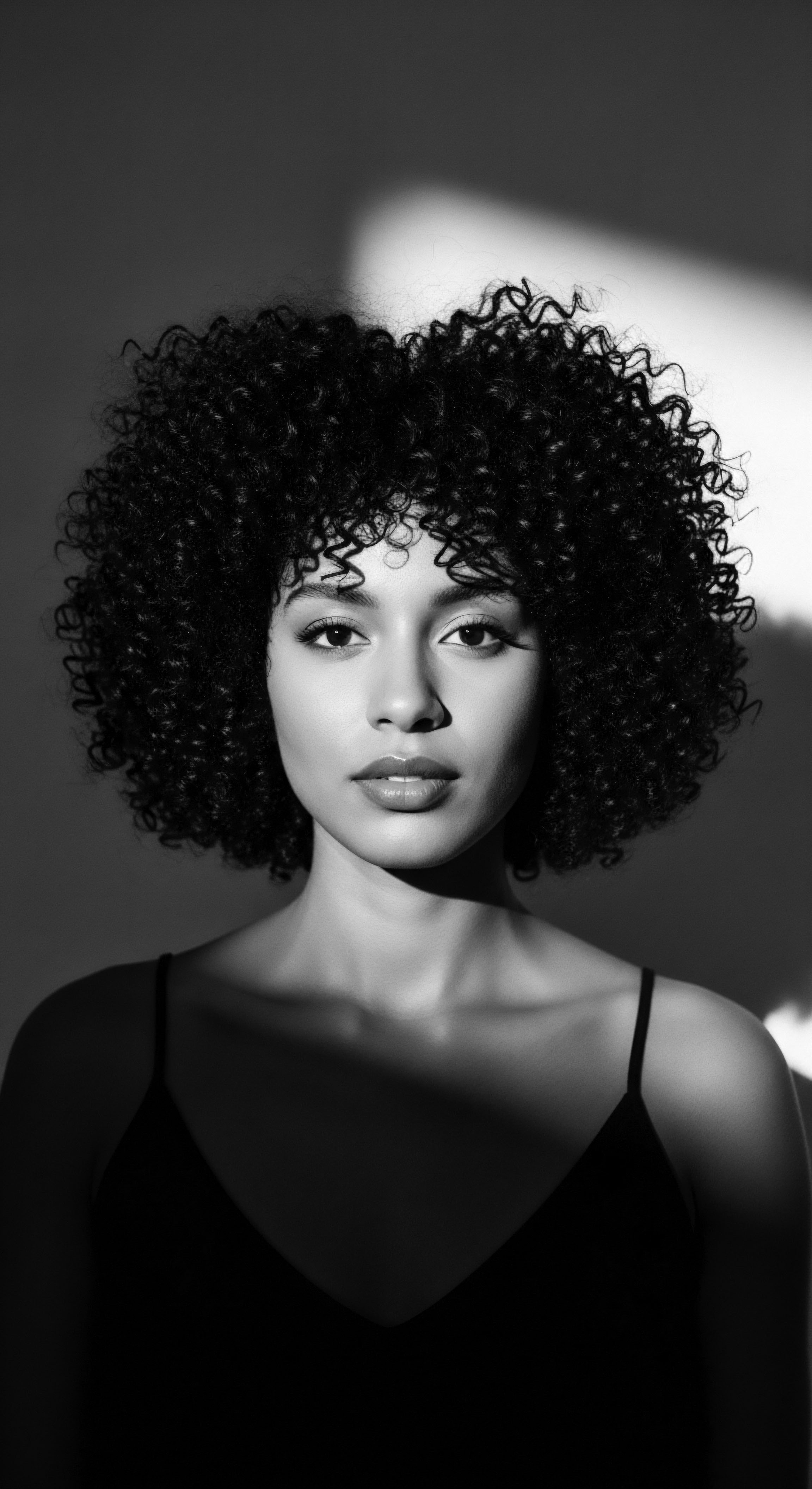
Echoes from the Source ❉ Biological and Ancestral Foundations
The inherent biological structure of Afro-textured hair, characterized by its unique helical configuration, dictates specific care requirements. This morphology, while granting extraordinary volume and spring, also renders the hair more susceptible to dryness and mechanical damage compared to straighter hair types. The cuticle layers, which protect the hair shaft, are often less tightly bound in coily strands, leading to increased porosity and a reduced capacity to retain moisture.
The precise scientific explanation of this phenomenon informs modern product development and care methodologies. However, this scientific understanding does not exist in a vacuum; it often validates and provides deeper explanations for ancestral practices developed over millennia.
Ancient African communities, through generations of observation and experiential knowledge, cultivated sophisticated hair care regimens long before modern scientific laboratories. They understood the meaning of hydration and protection for their hair. This ancestral wisdom, passed down through oral traditions and communal rituals, utilized a rich pharmacopeia of indigenous botanicals. For instance, the Himba tribe of Namibia has long used a mixture of ground ochre, goat hair, and butter to form and maintain their dreadlocks, a practice that simultaneously protects the hair from environmental elements and signifies deep cultural ties.
Similarly, the Basara Tribe of Chad applies an herb-infused oil and animal fat mixture, known as Chebe, to their hair weekly for length retention, braiding it to maintain the hair. These traditional methods, often incorporating fats, oils, and clays, speak to an intuitive understanding of lipid barriers and moisture sealing, predating contemporary dermatological explanations. The exploration of Afro-Textured Hair Wellness, therefore, must consistently reflect its journey from elemental biology and ancient practices, demonstrating how empirical observation, refined over centuries, laid the groundwork for contemporary scientific inquiry.
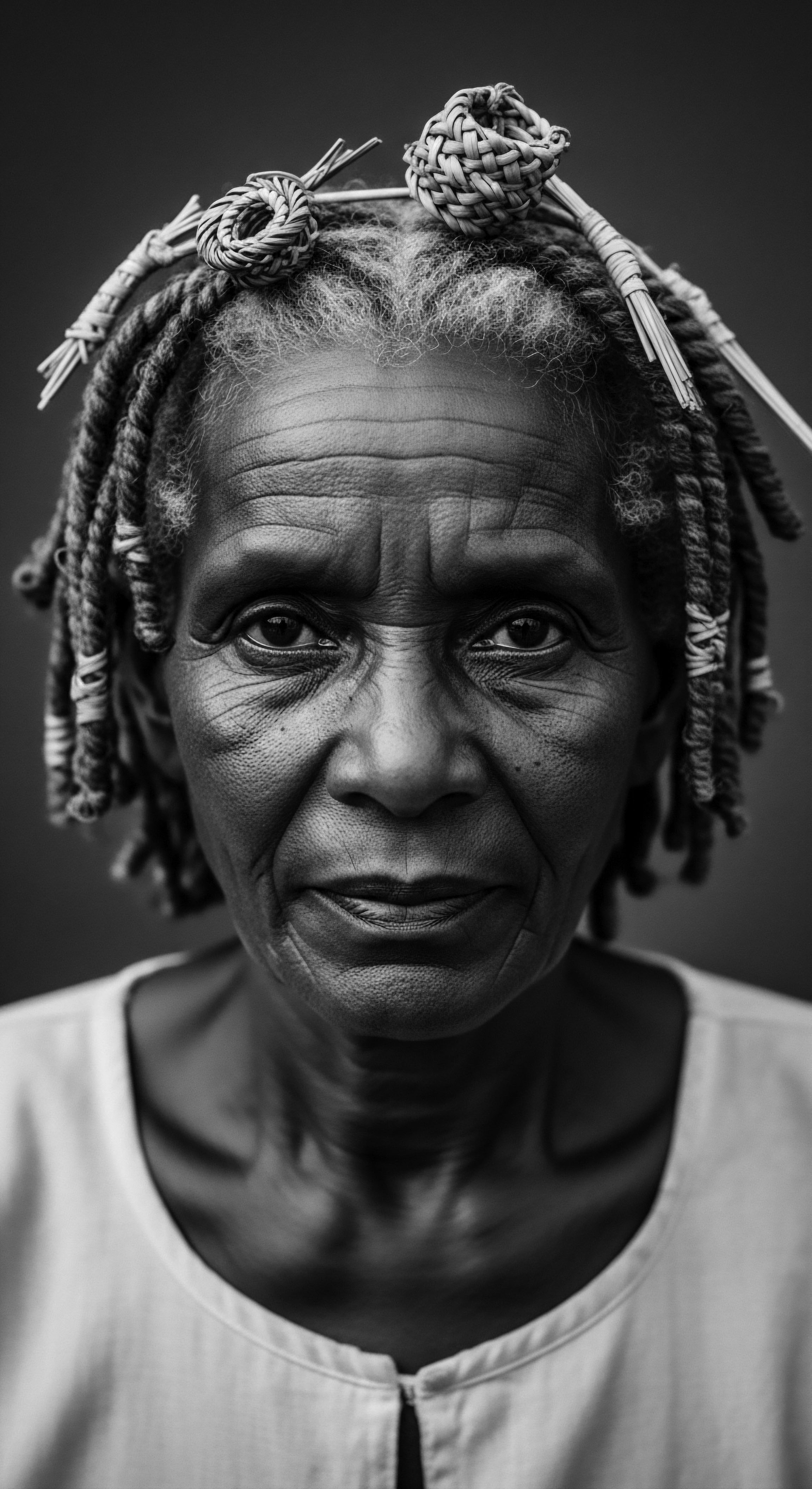
The Unbound Helix ❉ Identity, Resistance, and Social Praxis
The sociological and psychological dimensions of Afro-Textured Hair Wellness are particularly rich for academic analysis. Hair, for individuals of African descent, has never been a neutral physical attribute. It has been a battleground for identity, a canvas for artistic expression, and a powerful symbol of resistance against oppressive beauty standards.
The historical context of slavery and colonialism systematically sought to dismantle the cultural significance of Black hair, often through forced shaving, aiming to strip individuals of their identity and heritage. This deliberate act of dehumanization had profound and lasting psychosocial consequences, contributing to internalized perceptions of “unruly” or “unprofessional” hair.
The academic investigation into this historical trauma reveals how the concept of “good hair” (hair that approximated Eurocentric straightness) became intertwined with social mobility and acceptance within post-slavery societies. This dynamic exerted immense pressure on Black women, leading to widespread use of chemical relaxers and heat styling, often with detrimental effects on hair health. A significant scholarly focus examines the psychological distress and mental instability that can arise from the constant diminution of Black identity through the disparagement of Black hairstyles.
The contemporary Natural Hair Movement, viewed through an academic lens, represents a profound counter-hegemonic social movement. It is a collective act of reclaiming agency and re-aligning identity with African roots and the broader African diaspora. This movement challenges the deeply entrenched Eurocentric beauty norms that have historically devalued Afro-textured hair. Academic studies, such as those by Ingrid Banks (2000) and Lanita Jacobs-Huey (2006), explore how Black women negotiate their identities through hair choices, connecting personal aesthetics to broader themes of community, gender, sexuality, and cultural authenticity.
Furthermore, the politicization of Black hair continues to be a central theme in academic discourse. The Afro hairstyle, during the Civil Rights and Black Power movements of the 1960s and 1970s, transformed into a potent political statement and a symbol of collective pride and resistance. This was not merely a stylistic preference; it was a visible manifestation of defiance against racial oppression and a powerful affirmation of Black identity. The academic interpretation of Afro-Textured Hair Wellness recognizes this continuous legacy of hair as a site of political and cultural struggle, where personal hair choices contribute to broader societal shifts.
The academic understanding of Afro-Textured Hair Wellness also extends to its economic implications. The hair care industry, particularly products tailored for Afro-textured hair, represents a significant market. Historically, Black entrepreneurs like Madam C.J.
Walker pioneered products and distribution networks for Black hair care, marking important moments in Black economic empowerment and beauty culture. Contemporary academic analysis scrutinizes the dynamics of this market, including issues of product accessibility, ingredient transparency, and the continued influence of beauty standards.
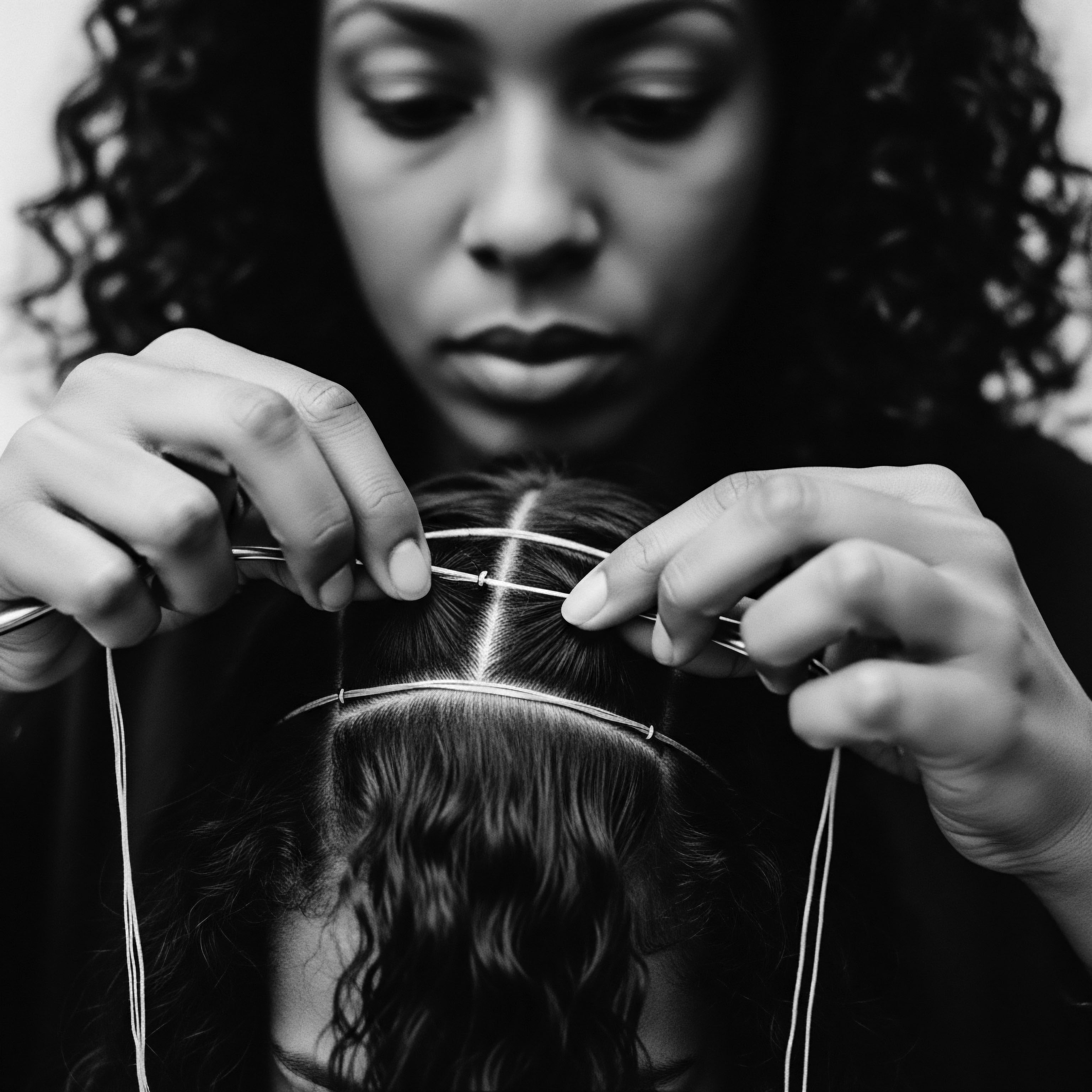
Interconnected Incidences ❉ Hair as a Communicative and Healing Medium
The academic framework for Afro-Textured Hair Wellness further examines hair as a sophisticated communicative medium within African and diasporic cultures. Beyond mere aesthetics, hairstyles conveyed intricate social codes, from marital status and age to tribal affiliation and even one’s role in society. This symbolic richness transforms hair into a living archive of cultural knowledge.
The study of hair as a healing medium, both physically and spiritually, also finds its place within this academic discourse. Traditional African medicine often linked hair to spiritual energy and divine communication, considering the head the most elevated part of the body and a portal for spirits. This perspective informs traditional healing rituals where hair is sometimes incorporated or symbolically addressed.
Modern wellness practices, while not always overtly spiritual, often echo this holistic approach by emphasizing scalp health, stress reduction, and the psychological benefits of self-care routines. The intersection of these ancient spiritual beliefs with contemporary scientific understanding provides a nuanced perspective on Afro-Textured Hair Wellness.
A crucial aspect of Afro-Textured Hair Wellness, often overlooked in mainstream narratives, involves the unique challenges and triumphs of hair care in mixed-race individuals. These experiences frequently involve navigating diverse cultural influences and sometimes conflicting beauty ideals. Academic studies exploring mixed-race identity and hair reveal the complexities of self-perception and the search for belonging, often expressed through hair choices that blend or honor multiple heritages. This area of inquiry underscores the fluid and adaptive nature of Afro-Textured Hair Wellness, extending its definition to encompass the rich spectrum of Black and mixed hair experiences.
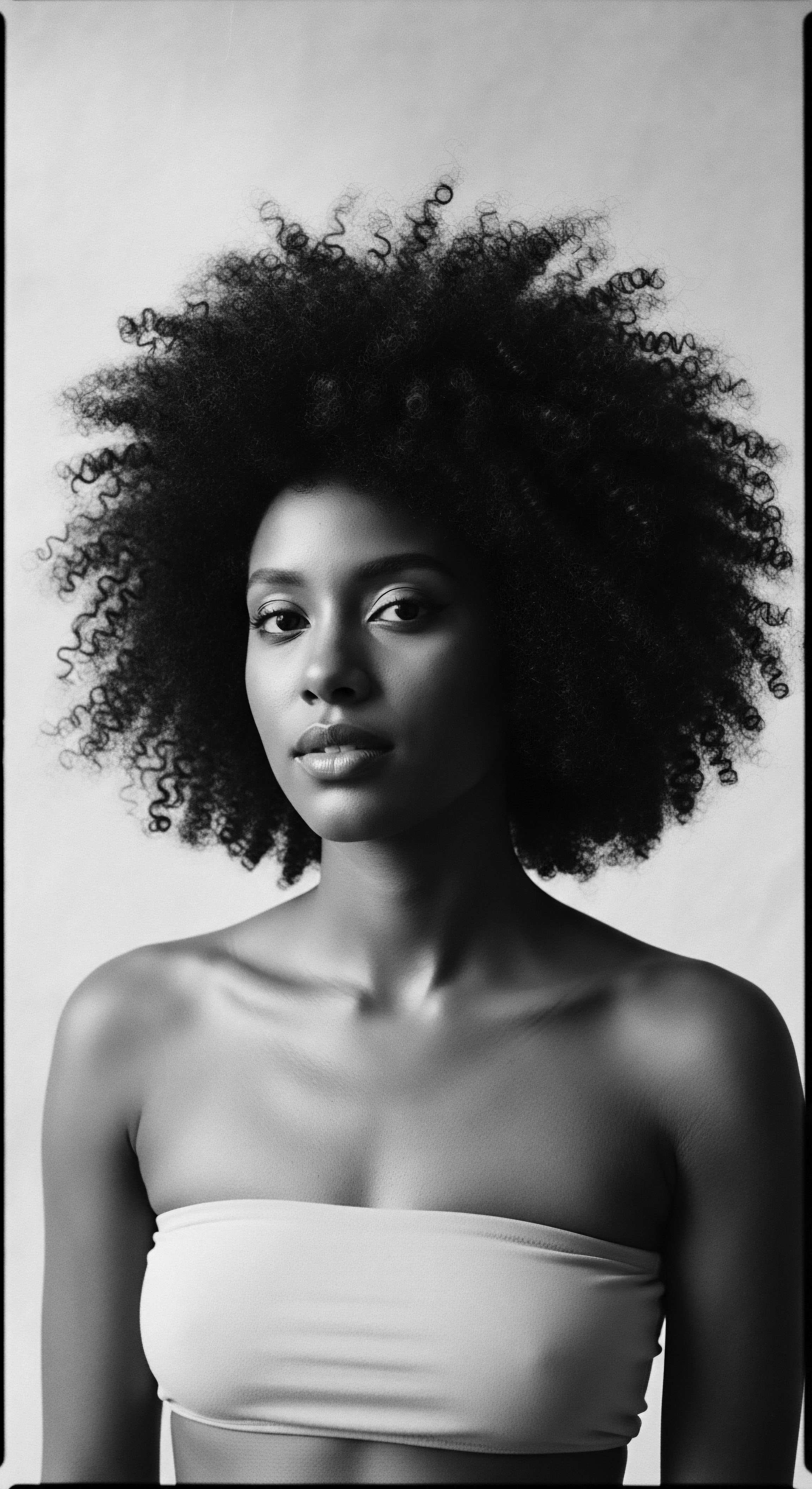
Reflection on the Heritage of Afro-Textured Hair Wellness
As we close this exploration, the enduring heritage of Afro-Textured Hair Wellness emerges not as a static concept, but as a vibrant, breathing testament to the resilience and spirit of a people. From the ancient African hearths where hair was sculpted into symbols of status and spirituality, to the hidden cornrows that mapped paths to freedom, and the proud Afros that declared liberation in a new world, each strand holds a profound story. This journey through history reveals that the meaning of Afro-Textured Hair Wellness is an unbroken lineage of care, creativity, and cultural affirmation.
The Soul of a Strand ethos guides us to perceive each coil and curl as a living archive, carrying the whispers of ancestors and the strength of generations. It reminds us that caring for Afro-textured hair is more than a routine; it is a ritual of remembrance, a connection to ancestral wisdom, and a celebration of self. The physical vitality of the hair is inextricably bound to the emotional and cultural health of the individual, reflecting a holistic perspective that honors both the scientific reality of the fiber and the profound spiritual significance it holds.
The evolving significance of Afro-Textured Hair Wellness in our contemporary world speaks to a continuous re-engagement with identity. It is a call to recognize the inherent beauty and strength of textured hair, to reject narrow standards, and to embrace the rich diversity of Black and mixed-race hair experiences. This ongoing dialogue between past and present, between ancestral practice and modern understanding, continually shapes the future of textured hair care, ensuring that its legacy of beauty, resistance, and wellness continues to flourish. The journey of Afro-Textured Hair Wellness is, at its heart, a perpetual affirmation of self, deeply rooted in the soil of heritage.
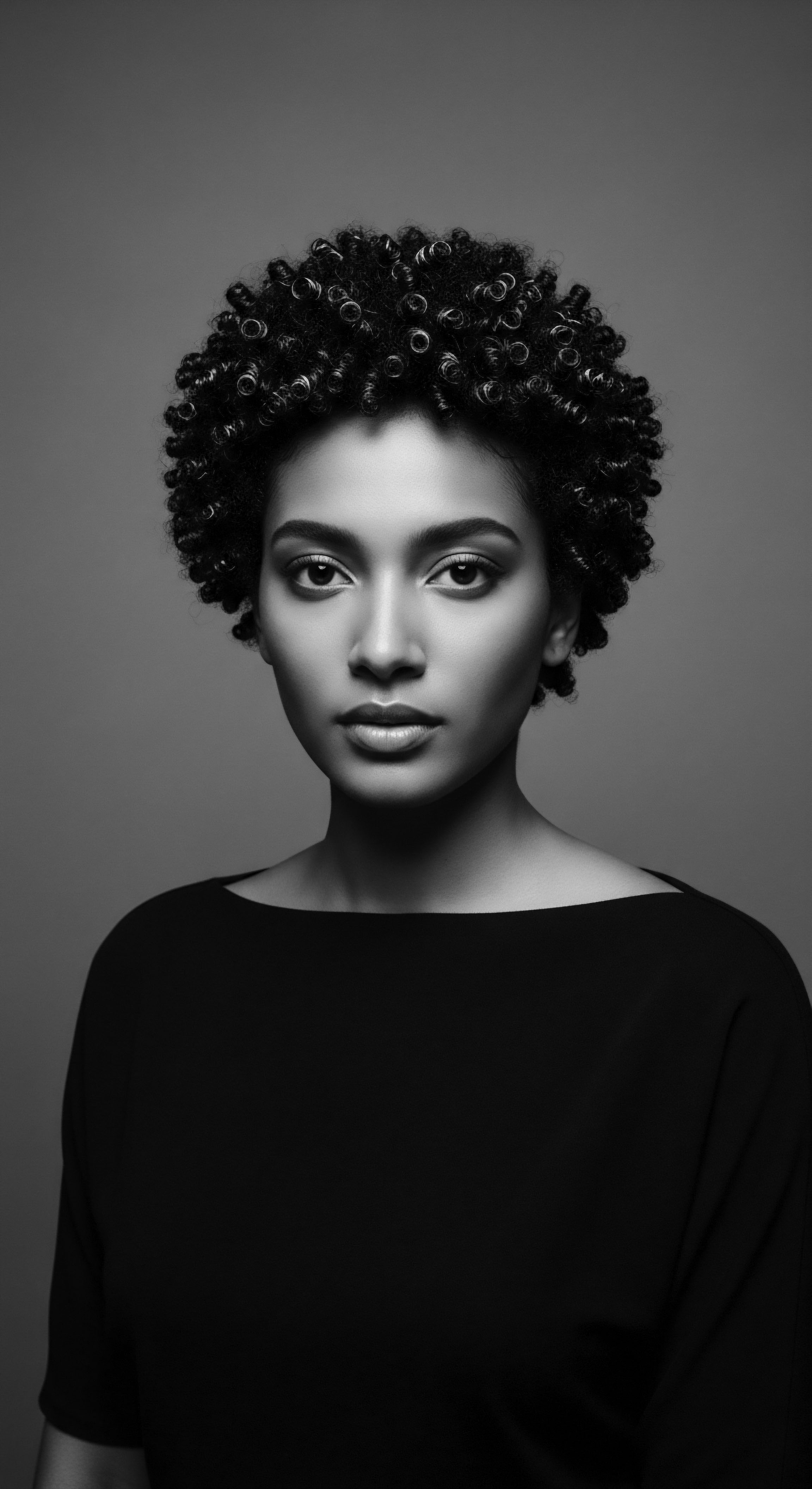
References
- Banks, I. (2000). Hair matters ❉ Beauty, power, and Black women’s consciousness. New York University Press.
- Byrd, A. D. & Tharps, L. L. (2001). Hair story ❉ Untangling the roots of Black hair in America. St. Martin’s Press.
- Jacobs-Huey, L. (2006). From the kitchen to the salon ❉ Language and cultural co-construction in the African American beauty shop. Oxford University Press.
- Mercer, K. (1994). Welcome to the jungle ❉ New positions in cultural studies. Routledge.
- Patton, M. F. (2006). African-American hair ❉ A history of beauty, culture, and resistance. McFarland & Company.
- Rooks, N. M. (1996). Hair raising ❉ Beauty, culture, and African American women. Rutgers University Press.
- Sieber, R. & Herreman, F. (2000). Hair in African art and culture. Museum for African Art.
- Tate, S. (2007). Black beauty ❉ Aesthetics, culture, and power. Ashgate Publishing.
- Thompson, C. (2008). Black women and identity ❉ What’s hair got to do with it? Michigan Feminist Studies, 22(1).
- Thompson, C. (2009). Black women, beauty, and hair as a matter of being. Women’s Studies ❉ An Inter-Disciplinary Journal, 38(8).
